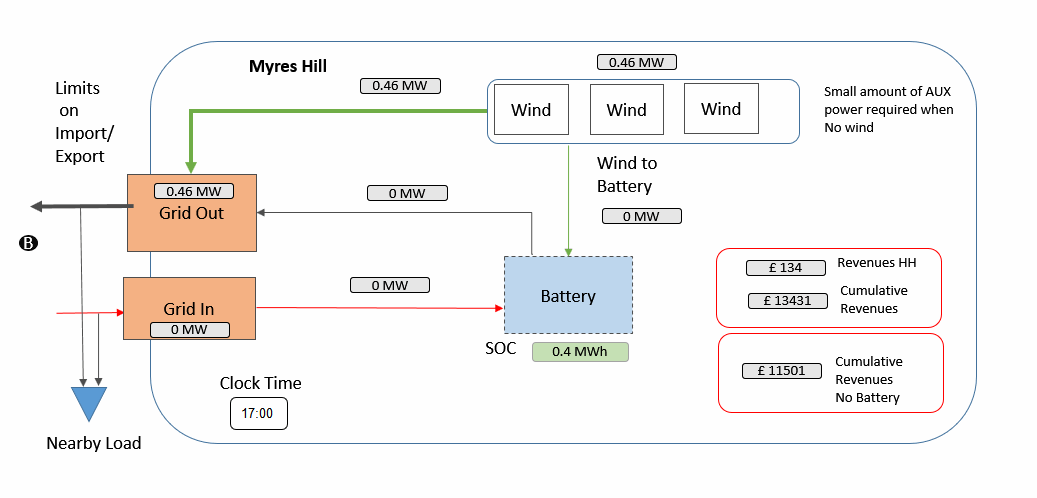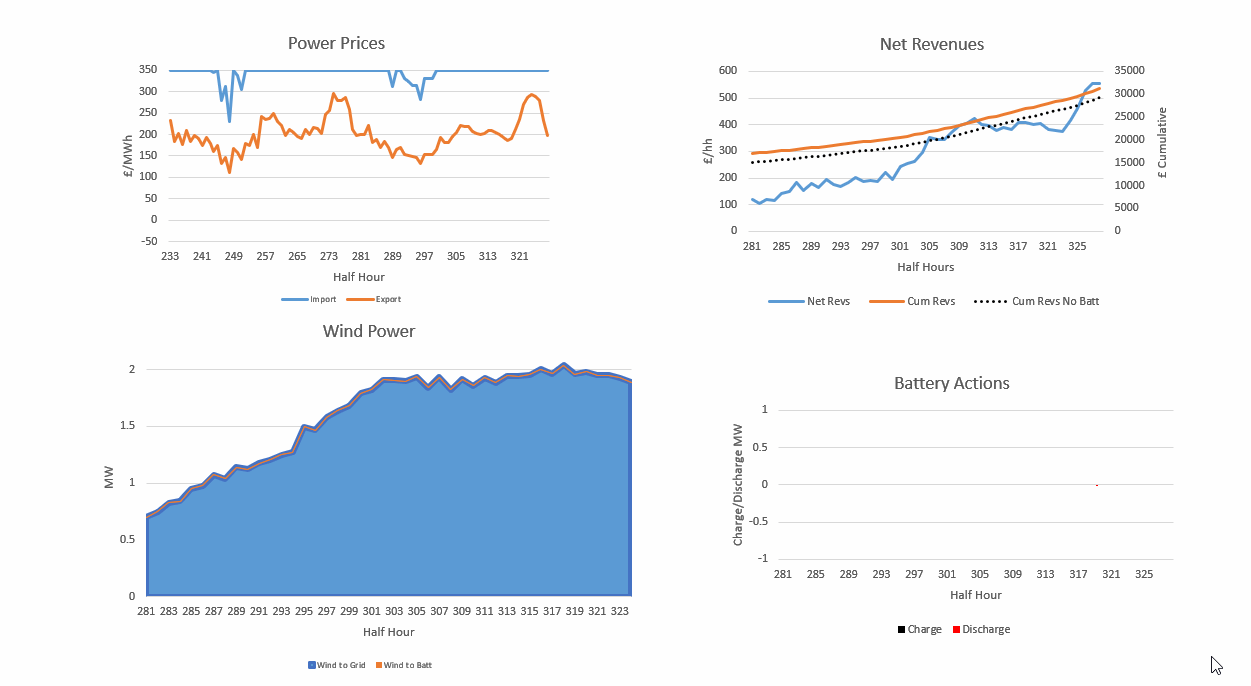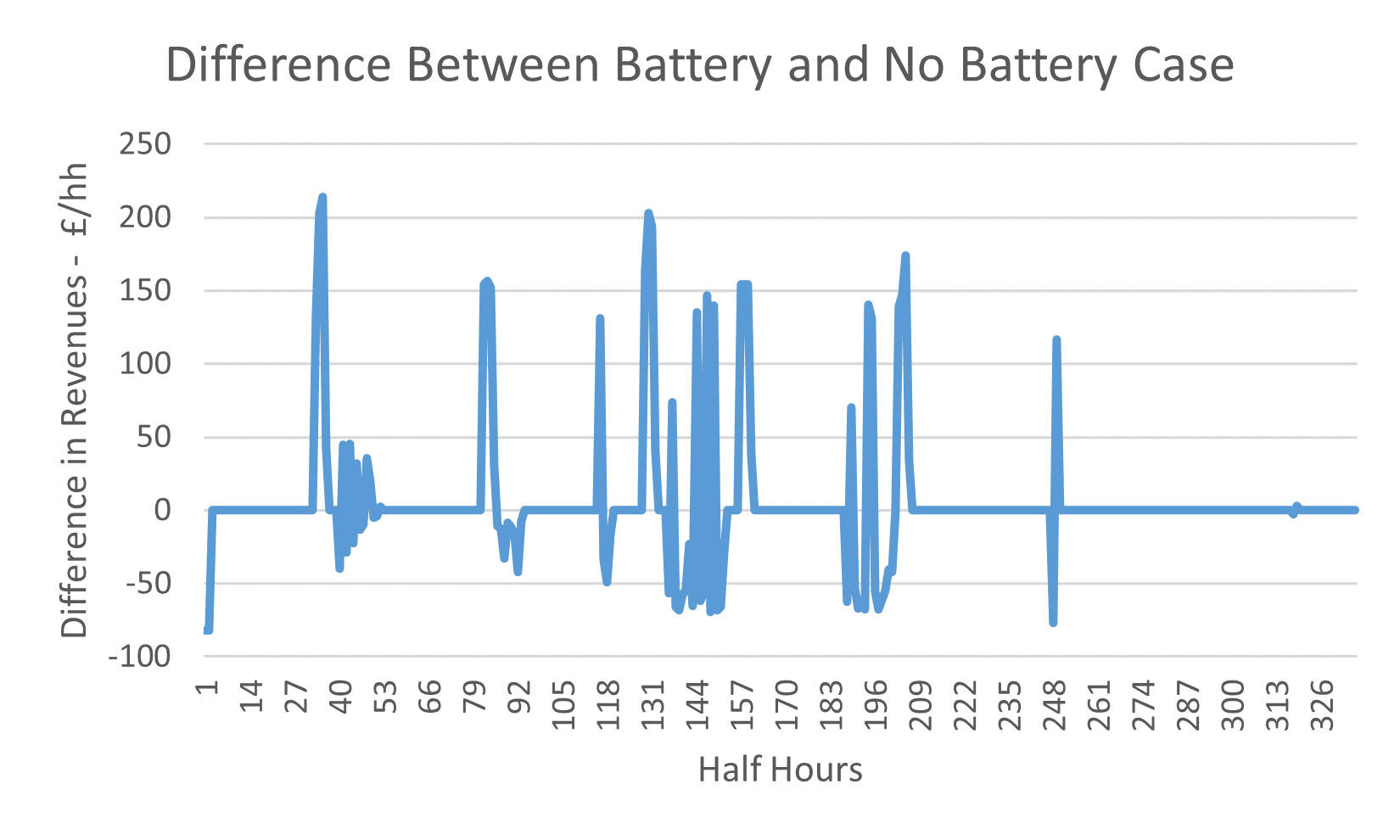Use Case 2: Myres Hill Wind Turbine with Battery Exporting to Grid
Case Overview
A small 225 kW Vestas V27 wind turbine + 2 x 0.9 MW turbines situated at Myres Hill near East Kilbride Scotland UK. The turbines are connected to an 11 KV grid connection and feeds the Castle Grid Supply point at 33kV/275kV. A small load is also connected near the Myres Hill, but is not used in this scenario. Note a hypothetical battery is included in this case and wind output is assumed to be sold on an Octopus Agile Outgoing (Export) tariff. There is an export limit.
Assets
- ~ 2 MW Wind Turbines
- 1 MW 2 MWh Battery
- MPC Control.
- Load Nearby ~60 kW
Market
Usecase 2 assumes that the wind turbine sells to it power on an octopus outgoing agile tariff. Click here for more details on the tariff.
Control and Data Capture
Usecase 2 assumes the use of MPC control. A look ahead function uses future prices and determines whether or not to export wind output or store into a battery. At the appropriate times the battery is dischared to maximise revenues to the site.
Animation
The video below conceptualises the current setup in block form and shows a simulation/animation of the assets described above. Arrow sizes represent flows associated with use case.


Notes
- Revenues = Export to grid - Import from Grid Revenues
- Simulation over one week; Half Hour by Half Hour. Sim start from HH - 1
- Graphs show rolling window. Note the right hand side of the graph shows the latest output. Those to the left of that point represent the historical points
- Note zero flow lines still shown
Commentary
In this case, the net benefits of the addition of a battery of the size assumed is around ~£2,000/week which would equate to annual revenue of circa ~£100,000.
Of course this is assumption dependent and assumes the uses of a dynamic time of use tariff. These additonal revenues would need to cover the initial cost of the battery and its ongoing maintenance. Around 8.5% of the wind output was
diverted to the battery over the week.
Figure 3 below shows the differences in revenues generated from using a battery against not using a battery for 336 half hours(hh).

Negative revenues occur when the battery is charged from renewables and the positive values occur when the battery is discharged. There are 12 times when revenues are in excess of £150/hh and 22 in excess of £100/hh.



